According to the 2025 White Paper on China’s Pet Industry (Spending Report), spending by dog and cat owners had surpassed 300 billion yuan (US$41.34 billion) by 2024, with the number of those pets exceeding 120 million. Specifically, spending by dog owners reached 155.7 billion yuan, a 4.6% year-on-year increase, while spending by cat owners reached 144.5 billion yuan, a significant 10.7% increase year on year. This expanding market has led to the creation of many new professions that support pets throughout their lives.As attention to pet health grows among pet owners, an increasing number are opting for traditional Chinese veterinary medicine (TCVM) for their pets’ healthcare and therapeutic needs.
When TCVM enters pet hospitals
TCVM is no novelty. Records of animal healthcare in the “Rites of Zhou” (circa 300 BCE) and the “Horse Healing” mural in Cave 296 of the Mogao Caves at Dunhuang attest to its ancient roots. However, its use in modern pet care represents a fascinating fusion of tradition and modernity. And now, this millennia-old Eastern wisdom is unlocking new hope for furry patients in unexpected ways.
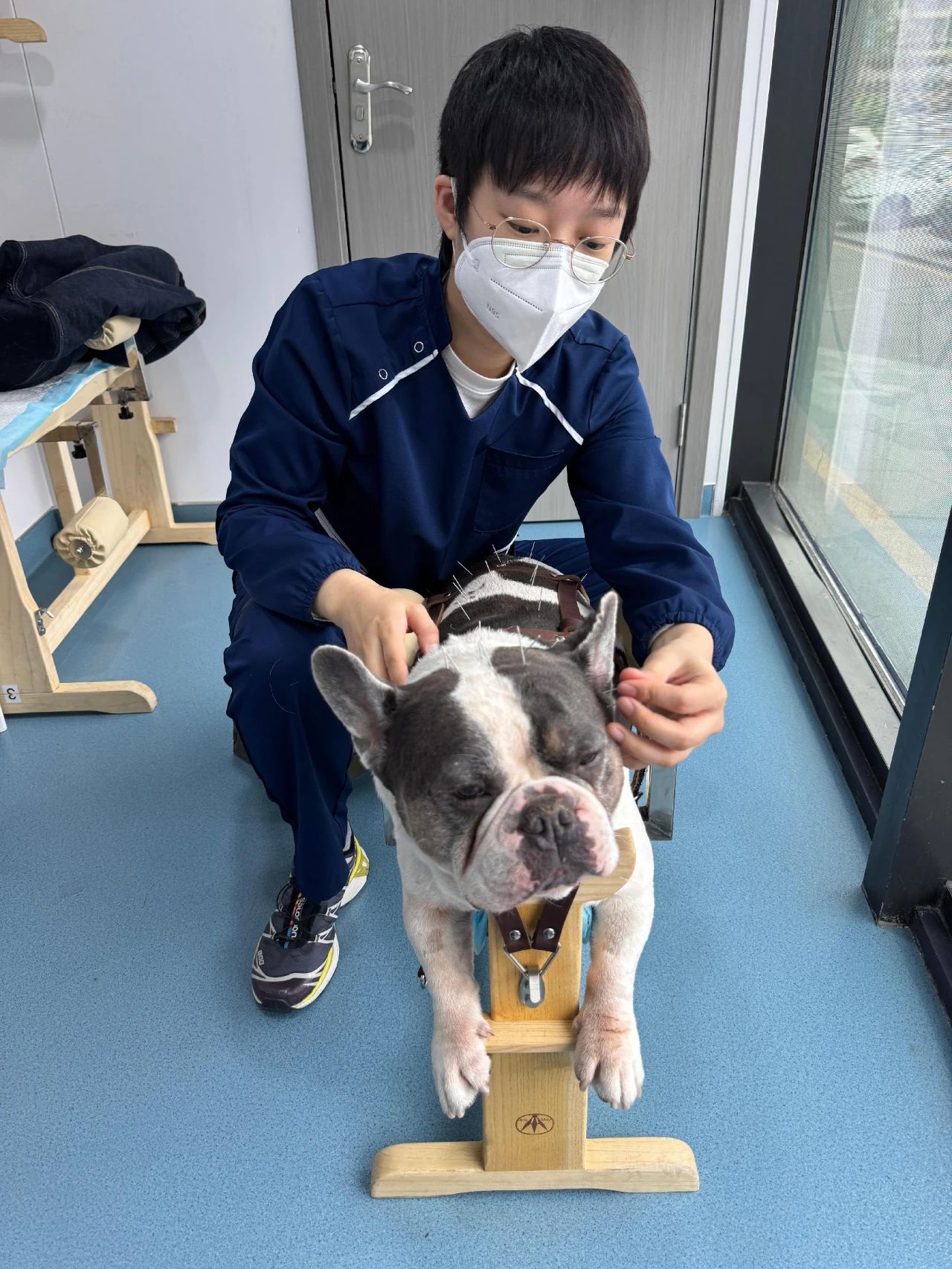
Li Heng performs acupuncture on a pet dog at Luno Pet Hospital in Luohu District last week.
Common TCVM therapeutic techniques include acupuncture, aquapuncture (a form of acupuncture where a small amount of liquid is injected into an acupuncture point), herbal medicine, tuina (medical massage), and moxibustion (the burning of dried mugwort on or near the skin).For example, acupuncture involves stimulating specific points on the body, usually by inserting specialized needles. These points typically lie along the body’s Meridian Channels, through which qi, or vital energy, is believed to flow. Most veterinary acupuncture points and Meridian lines are transposed to animals from humans, though knowledge of some “classical points” on particular species has been retained and is used to this day. “Fundamentally, the basic theories of traditional Chinese medicine for pets and humans are the same,” explained Li Heng, a TCVM practitioner who works at Luno Pet Hospital in Luohu District.Li, who graduated from Southwest University with a major in veterinary medicine, started practicing TCVM in 2020. At present, she has up to 200 visits per month. The diagnostic approach in TCVM closely mirrors the methods used for humans. Four key techniques — observation, auscultation and olfaction, inquiry, and pulse-taking — are used to assess a pet’s condition.
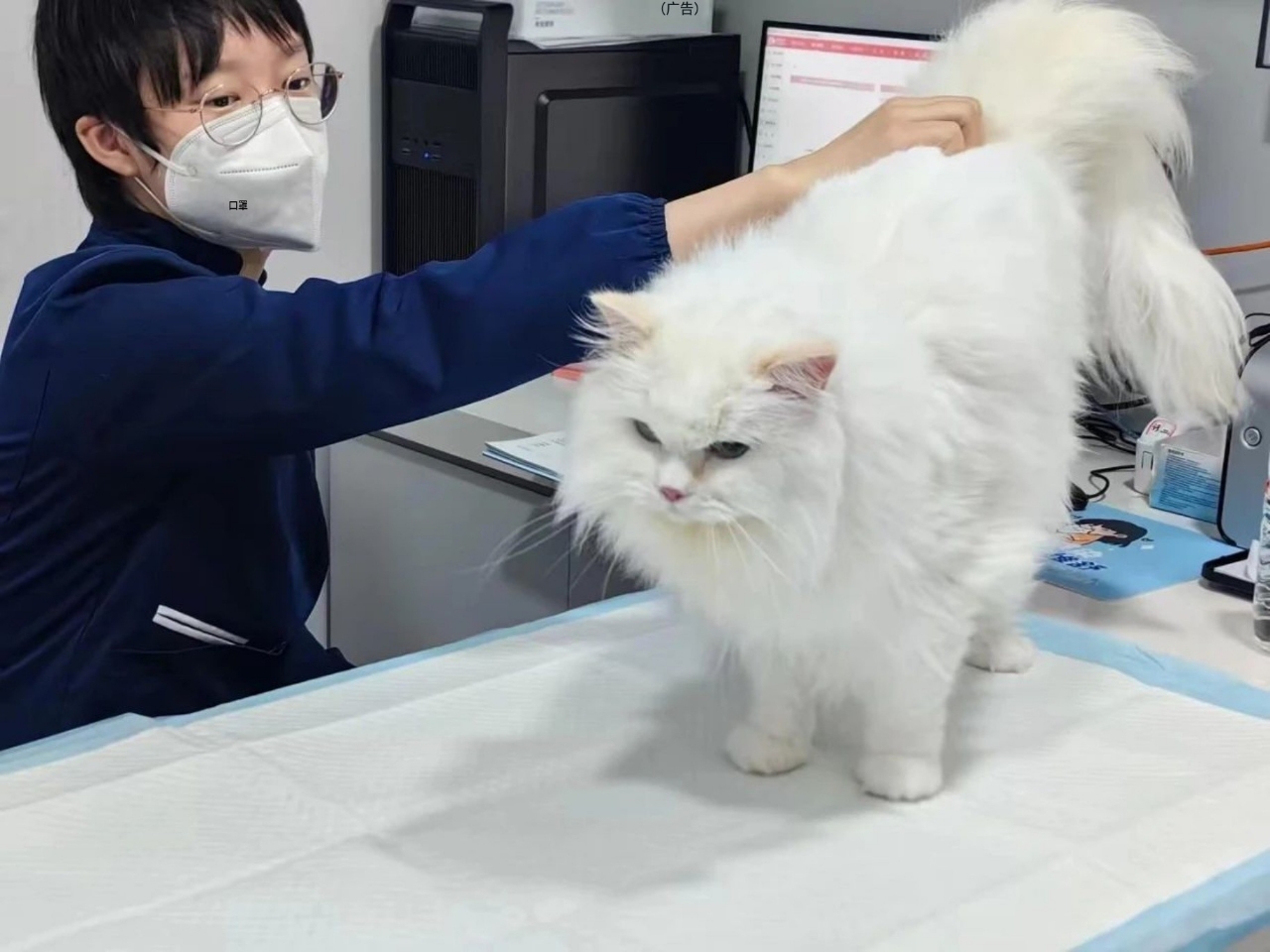
Li Heng caresses a pet cat while giving it a health checkup at Luno Pet Hospital in Luohu District last week.
Practitioners begin by observing the pet’s overall development, complexion, tongue coating, and expressions, which can reveal vital clues about their health. Auscultation and olfaction involve listening for sounds such as coughing or wheezing and detecting any unusual scents emitted by the pet, which can indicate internal issues. Inquiry is a nuanced process since pets cannot communicate verbally. Veterinarians rely on detailed accounts from the pet’s owner regarding the animal’s living environment, dietary habits, behavior changes, and medical history to piece together a comprehensive health picture.Finally, pulse-taking in pets is conducted on the inner side of their hind leg, where the pulse is felt with a light touch. A skilled veterinarian can discern a range of health issues from the quality and rhythm of the pulse, combining this information to form a diagnosis and tailor an appropriate treatment plan.
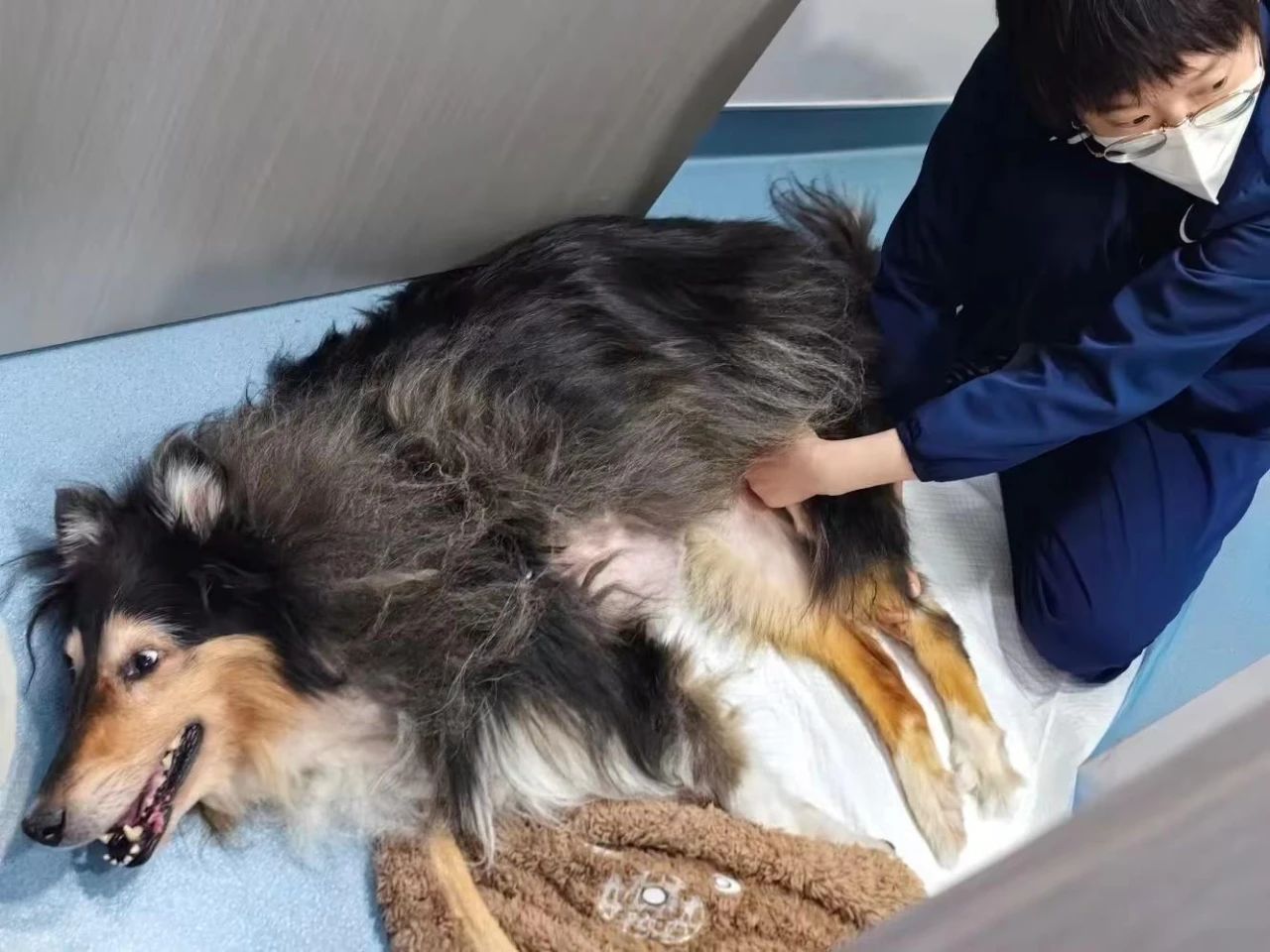
Li Heng takes the pulse of a pet dog at Luno Pet Hospital in Luohu District last week.
According to Li, issues such as post-fracture surgery pain, arthritis exacerbated by seasonal shifts, persistent gastrointestinal troubles like recurrent vomiting and diarrhea, chronic skin conditions, and unusual behaviors stemming from neurological issues are all effectively mitigated through acupuncture. “Some animals that were previously unable to walk may be able to walk immediately after undergoing two or three traditional Chinese medicine treatments,” Li said. She noted that compared to Western medicine examination fees that can reach thousands of yuan, TCVM has relatively lower diagnostic costs. For most traditional Chinese veterinarians, the fee for each diagnosis hovers around several hundred yuan.
Not a panacea
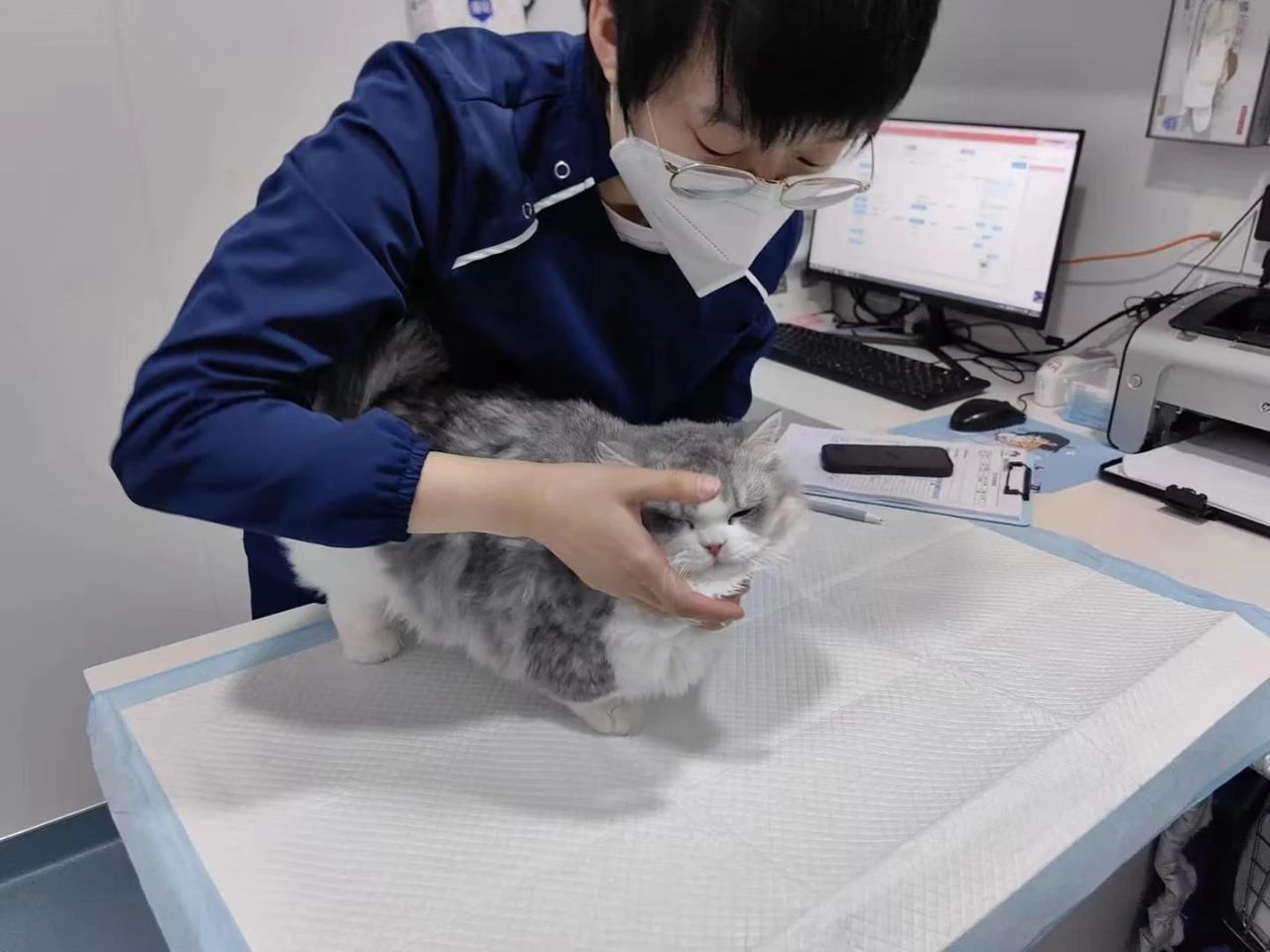
Li Heng examines a pet cat at Luno Pet Hospital in Luohu District last week.
While the efficacy of TCVM can be remarkable, it is not all-encompassing. Li emphasized that TCVM has its limitations and that Western medicine plays a vital role in certain critical situations. Determining whether a pet’s condition is urgent or chronic is crucial in deciding the appropriate course of treatment. “If the condition is chronic, it may be feasible to initially focus on TCVM for its holistic approach to managing long-term health issues. However, in the case of an urgent situation where the pet’s life or vital signs are at risk, immediate intervention with Western medicine is often necessary to stabilize the animal’s condition,” Li said.Once the pet’s vital signs are stable, a combination of TCM and Western medicine can be considered to provide comprehensive care, she added. This integrated approach leverages the strengths of both medical systems, using Western medicine to address acute symptoms and TCM to support the body’s overall healing process and address underlying imbalances. Li also mentioned that acupuncture, while generally safe and effective, can occasionally cause discomfort or pain, and some animals may not tolerate the procedure well. Additionally, the administration of Chinese medicine can pose challenges, particularly with certain animals. For larger animals, it might be difficult to administer medicine orally, as they may resist or be uncooperative during the process.Another challenge arises with cats, which are often sensitive to the taste and texture of traditional Chinese medicines. These medications typically have a distinct, sometimes bitter flavor that can be unappealing to felines. When cats chew these medicines, the taste can trigger a salivary response, leading to an excessive secretion of saliva in their mouths.
“This can make the process of administering Chinese medicine to cats quite challenging, requiring patience and potentially innovative methods to ensure the medication is consumed without causing distress to the animal,” Li said.“Because my dog couldn’t undergo surgeries and Western medicines couldn’t improve its condition any better, we started seeing a traditional Chinese veterinarian,” said a pet owner in Shenzhen, whose 15-year-old dog suffers from advanced liver cancer.According to the pet owner, her dog now takes traditional Chinese medicine, and Li adjusts medications based on its condition. “We want it to live more comfortably during its last days,” the dog owner said.Another pet owner takes her dog to have acupuncture every week. “Taking it to see Dr. Li is a weekly routine. My dog has systemic arthritis so it can’t walk very well. Although the acupuncture process is relatively slow, I think it’s quite pet-friendly,” the pet owner said.
Pet economy boom
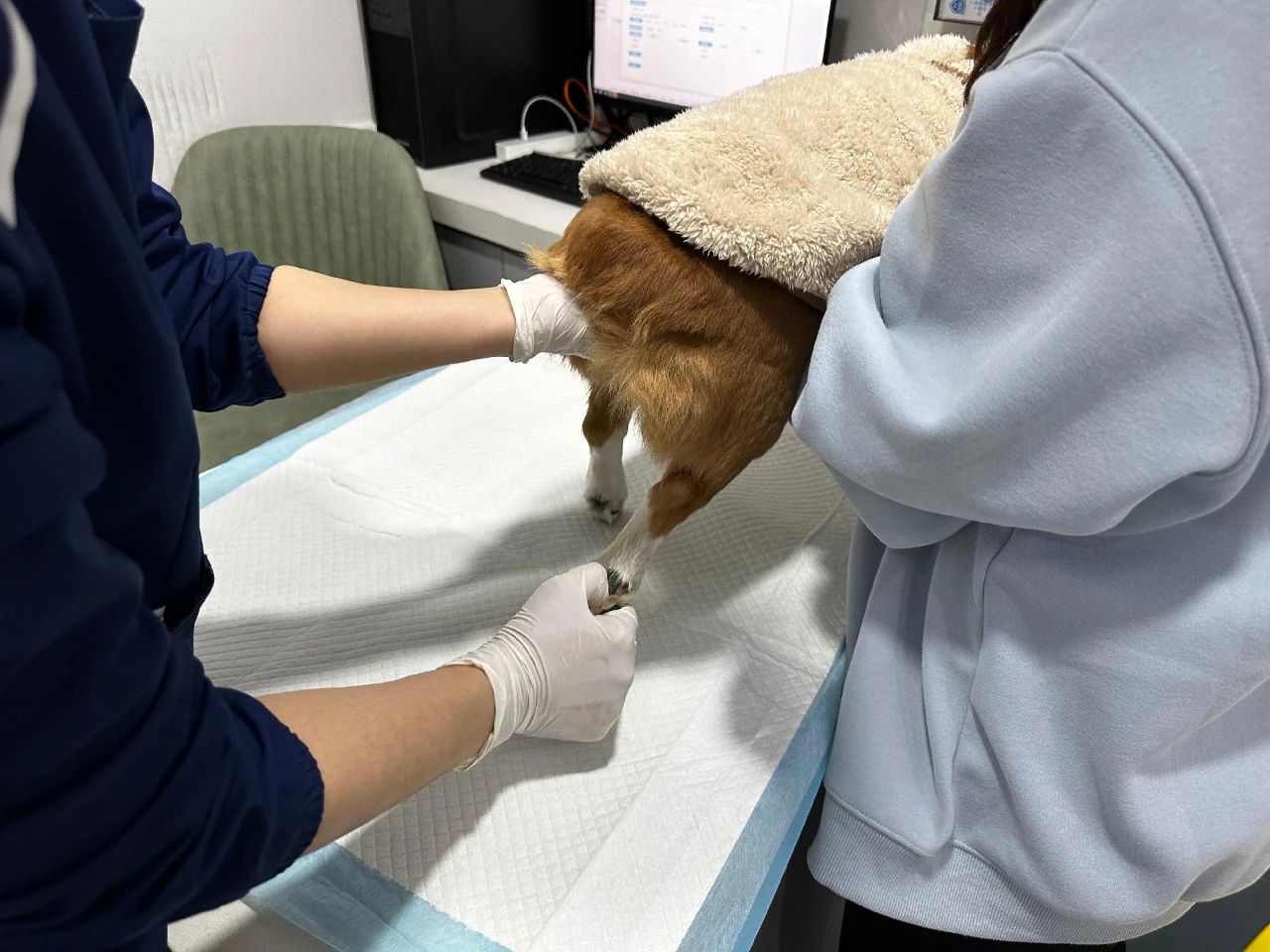
Li Heng examines a pet dog at Luno Pet Hospital in Luohu District last week.
As the habits of pet owners evolve, they are increasingly inclined to dedicate a greater amount of resources to ensuring the well-being and comfort of their furry companions. The market for premium pet food, health supplements, and medical care is experiencing a steady upsurge. Pet owners are also becoming more health-conscious, making routine check-ups and preventive healthcare a standard practice in pet care. Li is optimistic about the applications and development of TCVM. “In the future, an increasing number of individuals are anticipated to harness the potential of TCM within the realm of pet healthcare,” Li told Shenzhen Daily. She also believes that the full worth of this ancient practice for animal companions has yet to be fully tapped, with the potential for a multitude of specialized sectors to emerge, such as tonifying diets (promote balance and health), therapeutic massage equipment, nutritional supplements, and comprehensive wellness programs. “As pet owners regard their furry friends as beloved members of the family, they are inclined to spoil them with an array of services,” Li said.
Source: ShenzhenDaily



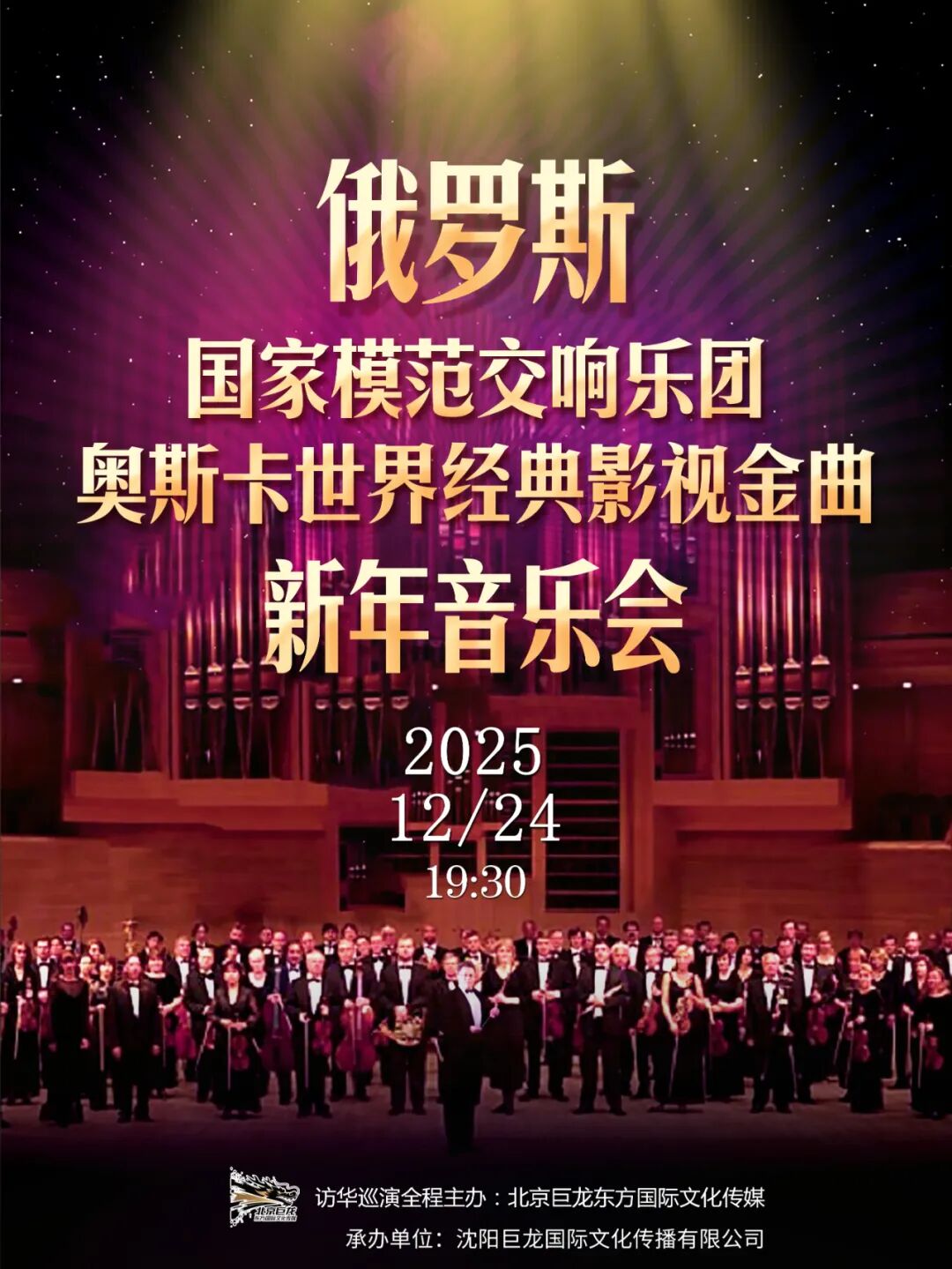
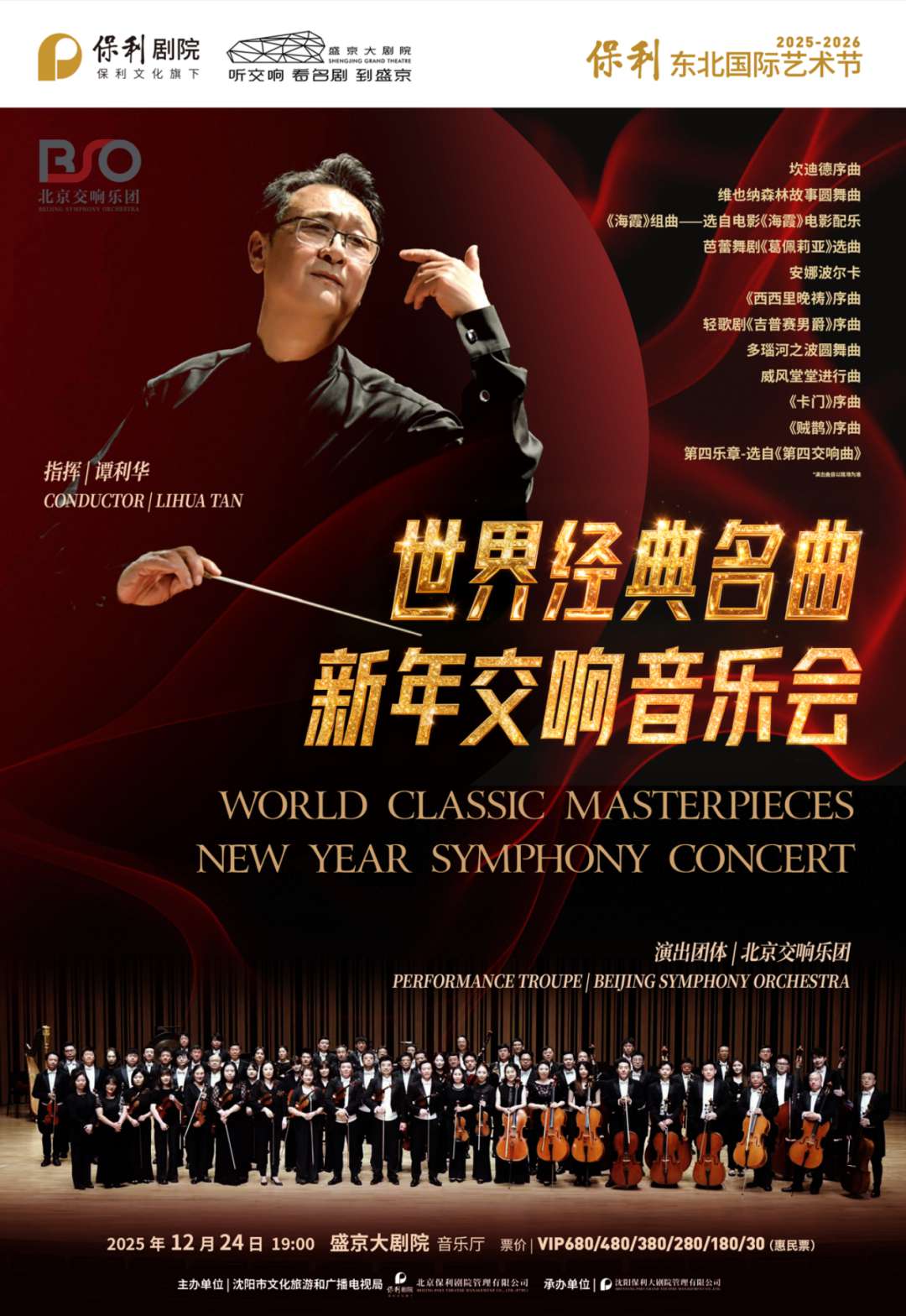







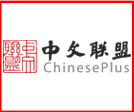
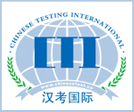
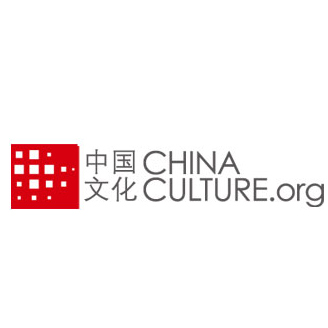
 京公网安备
京公网安备